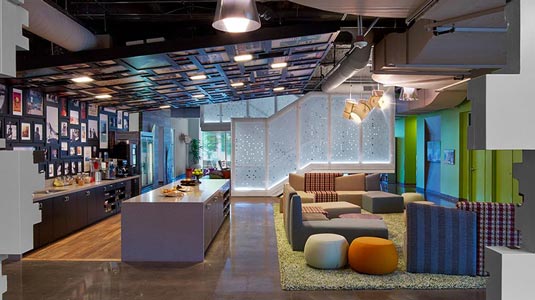Don’t just design for eyes. Designer Joseph White explains how to engage all the senses.

Perception is open to interpretation
Think back a few months to when the photo of #thedressignited the internet in debate, those who saw #blueandblack went tweet-for-tweet against those seeing #whiteandgold.
Context is critical
Human perception is highly influenced by contrasts. Brushing your teeth before a glass of OJ, or stepping out into the sun after a matinée will make that truth abundantly clear. Understanding the primary context in which your work will be perceived allows you to avoid unpleasant contrasts and focus on the features that will carry the greatest impact.- Consider the existing environment: light levels, ambient colour (e.g. what can you see through the windows?), sources of sound (an adjacent busy street for example), and any present odours (pleasant or otherwise) that may surround the space.
- Note which sources to build upon and which to mitigate. Also identify your audience: what are their expectations, behavioral norms, and point of view? The more you know, the greater your chances for success.

Awaken the senses
All of our senses have the ability to deliver a poignant impression. In daily life, however, we rarely stop to focus attention on individual sensory engagements. It is after all, the full experience that makes or breaks a space. The next time you walk into a new environment, take a quick survey; how are each of your senses being stimulated? A healthy and rich experience will target many, a dull and lifeless one… only a few. Based on your understanding of the context and objective, evaluate which of the senses can deliver the greatest impact for the task at hand.
- Consider each of the senses individually, and how they can collectively work to support your objective. colour, scale, proportion, light, acoustics, aroma, and appetite can be used to influence behavior within an environment. Principles of colour theory tell us that warm colours focus attention outward while cool hues lend themselves to introspective activities.
- Scents can leave us feeling calm, invigorated, or simply refreshed. The scale of a room along with its perceived brightness and colour temperature of light can have dramatic effects on the volume and level of speech between people.
- Texture and surface characteristics can impart a sense of swift efficiency or luxurious leisure. Even our sense of taste has a role to play. Food can motivate your audience to gather together, take a break, refuel for a long haul, or simply pause for a moment of delight.

